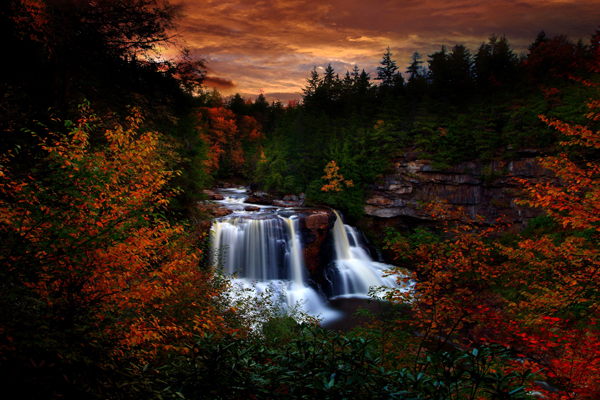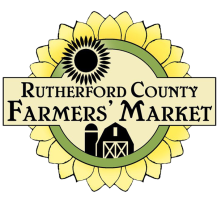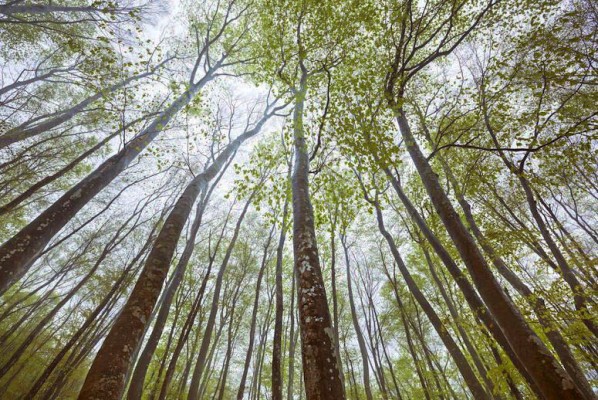
A bee floating in the birdbath–several years ago, I would not have thought twice about seeing a floating bee. Now, my thoughts go to the struggling pollinators. I believe I suffered firsthand from their diminishing numbers this summer. My vegetables grew and flowered, yet bore little fruit. Questions could be raised as to whether the seed was viable or if there had there been other environmental changes, to both of which I would reply “no.” Rather than blame ourselves with that long list of should-haves, such as “I should have watered at the same time,” “I should have weeded more,” etc., I now wonder if my area had pollinators. Why did I get so little food? Back in the ’70s, a study done by S.E. McGregor, retired from the USDA Agriculture Research Service, concluded that one third of our human diet is dependent on insect pollinators, most noticeably by honey bees and monarch butterflies. Bee populations are dying off dramatically and monarchs are becoming endangered.
Several factors are suspect in the decline of the pollinators in this country. Scientists have identified some chemicals that are used extensively for weed and pest control. Of particular note are the three neonicotinoid insecticides: clothianidin, imidacloprid and thiamethoxam, all of which are currently banned in Europe. Their bee colonies are recovering. Their ban is up for review this year and it is hoped that the proof of science with its hundreds of nature studies is preferred over the influence of chemical industries. The battle of science and money will determine the fate of the ban.
The introduction of chemicals in any organic entity does disrupt their existing system. Remember the commercial slogan “this is your brain on drugs”? As the brain is an organic entity, it is changed by the introduction of chemicals. Chemicals change a functioning balance. An ecosystem is no exception.
A functioning ecosystem is a small example of a balance of life. True balance is going to be diverse and is going to include cycles of life, including predatory consumption. Biodiversity is the word to define diversity within a species, between species and within ecosystems. Through years of cultural influence, the average American thinks of biodiversity as a place out there somewhere in nature. The reality is drastically different. Biodiversity is the variety and balance of life in a selected area, inclusive of our yards, ponds, gardens and farms. Gardeners and farmers should care about maintaining balance.
From americanforest.org:
Somewhere along the way we decided to convert the forests that used to cover our living and working spaces into huge expanses of lawn dotted with a few small, mostly non-native trees. So far we have planted over 62,500 square miles—some 40 million acres—in lawn. Each weekend we mow an area eight times the size of New Jersey to within an inch of the soil and then congratulate ourselves on a job well done.
And it’s not as if those little woodlots and “open spaces” that we have not paved over are pristine. Nearly all are second-growth forests that have been thoroughly invaded by alien plants like autumn olive, multiflora rose, bush honeysuckle, privet, Oriental bittersweet, buckthorn and Japanese honeysuckle. More than 3,400 species of alien plants have invaded more than 200 million acres of the U.S.
Grass is pretty; it is an outdoor rug that provides a play area for humans and presents features like an architectural beauty. How can this be an issue? Well, it is quickly becoming a driving issue because a green lawn is not diverse and is not a native part of the local ecosystem. Our fellow creatures need food and an environment to make a home and raise their young.
State Natural Heritage Centers have estimated that as many as 33,000 species of native plants and animals in the U.S. are now imperiled—too rare to perform their role in their ecosystem. These species can be considered functionally extinct.
Adding to the loss of the natural, native ecosystems is our selection of plants which we add to our landscape. Many of the plants we purchase are not native to this area. These non-natives get adapted to the local environment and explode with growth. To prove this, look at the explosive growth of the kudzu vine and the ever-appearing privet hedge. Both are difficult to eradicate. There are no native predators of either to keep their growth in check. As non-natives explode across our landscape, they eliminate native plants. So why do we care? The noble answer would be that we are out of balance; the practical answer is we are killing what we depend on for our own existence.
To reinforce this statement, let’s look at what Audubon says about the effect the loss of native habitat is having on our birds. From Audubon.org:
The bottom line is this—homeowners, landscapers and local policy makers can benefit birds and other wildlife by simply selecting native plants when making their landscaping decisions. Native oak trees support over 500 species of caterpillars whereas ginkgos, a commonly planted landscape tree from Asia, host only 5 species of caterpillars. When it takes over 6,000 caterpillars to raise one brood of chickadees, that is a significant difference.
Birdwatchers should care.
Here are more numbers to ponder from americanforests.org:
More than 3,400 species of alien plants have invaded over 200 million acres of the U.S. We have turned 54 percent of the lower 48 states into a suburban/urban matrix, and 41 percent more into various forms of agriculture. That’s right: We humans have taken 95 percent of nature and made it unnatural.
So, not only are we eradicating the food that native species of animals and insects need to survive (not thrive, simply survive), their environment has changed so much it is difficult to find appropriate areas in which to raise their young. Numbers are declining. Hunters should care.
Most of us enjoy massive green lawns, admiring most the ones which are devoid of weeds. We keep the weeds at bay by applying fertilizers for grass growth and weed killer to target weed elimination. Many consumers do not read the directions and guidelines for application.
Stupidly, the assumption of “more is better” is so wrong. Not only is it a waste of product and therefore money, “more” can burn and poison what you are trying to grow. It is just too much chemical. What happens to the excess? Follow the water: the rainwater, the sprinkler and hose water runoff. It all goes “somewhere.”
That “somewhere” is known as a watershed. Each of us is located in a watershed where runoff joins creeks, streams and rivers that try to support aquatic life as well as being a source of drinking water for wild creatures and humans alike.
Any land-use change decreasing native forestation, as well as runoff from excessive water drainage, does affect water quality. This situation has been dubbed Urban Stream Syndrome. The pollution from runoff caused by excessively watering yards and gardens, plus the saturation of our storm water systems and the collection of water at low points in the landscape from storms, all contributes to a reduction in water quality. The water routes itself into our own drinking water supply. The poorer water quality challenges the sustenance of life in the forests and streams and lakes. Fishermen should care.
Our lifestyles, farming methods and choices of esthetics for outdoor beauty are part of a world-web of life. In our country, “as many as 33,000 species of plants and animals in the U.S. are now imperiled.” That is very shocking and depressing news. The more I researched why I had no pollinators for my vegetables, the more I discovered the degree that our existence is out of balance. With my interest in gardening and ecosystems, how did the depth of these problems escape me? How many others fail to realize the extent to which our land and our lives are in decline?
 The Farmers Market Education series has had classes on various topics that address many aspects of a healthy yard and garden. The individual classes have a directed focus on a specific topic such as rain gardens, permaculture, fertilizing your lawn, building compost, beekeeping, canning and preserving, etc. These free classes are a huge contribution to those learning about sustainability and various aspects of farm/garden- based interest. Addressing the ever-expanding concern of our diminishing and failing ecosystems, as well as our need for a sustainable landscape, the University of Tennessee Extension Service is promoting their program called “Tennessee Smart Yards.” A group of Master Gardeners from Rutherford County (myself included) with Extension Agents Janie Becker and Mitchell Mote attended a day-long workshop focused on bringing this program to our community. Over the winter months, concepts of this program as well as achievable solutions will appear in this column.
The Farmers Market Education series has had classes on various topics that address many aspects of a healthy yard and garden. The individual classes have a directed focus on a specific topic such as rain gardens, permaculture, fertilizing your lawn, building compost, beekeeping, canning and preserving, etc. These free classes are a huge contribution to those learning about sustainability and various aspects of farm/garden- based interest. Addressing the ever-expanding concern of our diminishing and failing ecosystems, as well as our need for a sustainable landscape, the University of Tennessee Extension Service is promoting their program called “Tennessee Smart Yards.” A group of Master Gardeners from Rutherford County (myself included) with Extension Agents Janie Becker and Mitchell Mote attended a day-long workshop focused on bringing this program to our community. Over the winter months, concepts of this program as well as achievable solutions will appear in this column.
Homeowners will be offered classes and programs that assist in creating attractive and healthy yards by working with Tennessee’s environment rather than against it.
Knowledge will assist everyone in making conscious and responsible decisions and taking actions that help the sustainability of an earth in balance. We each need to start with our own piece of earth in balance. Together, we can cumulatively make a difference, honoring the diversity and natural balance that was on this earth before any of us existed.
















